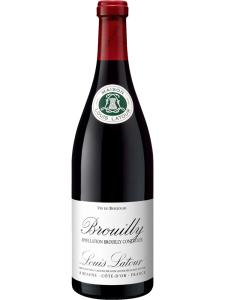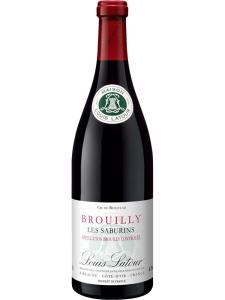Brouilly is an appellation for red wines produced from vineyards in central-north Beaujolais. The lower slopes of Mont Brouilly and the surrounding countryside play host to significant plantings of the Gamay grape variety, making a relatively robust and full-bodied style of wine, quite unlike the light, fresh Beaujolais Nouveau wines. Brouilly wines are more fruit-driven than many of the other Beaujolais cru wines, with plum and berry flavors outweighing Gamay's traditional floral character.
© Daniel Gillet
The viticultural area of Brouilly covers land in six communes surrounding Mont Brouilly, none of which – unusually for a Beaujolais cru – are named Brouilly. Instead, the area gets its name from the hill, which in turn takes its name from a Roman lieutenant, Brulius, who is thought to have planted vines here some 2000 years ago. The separate Cote de Brouilly appellation covers vineyards on the higher slopes of Mont Brouilly, and is completely surrounded by the much-larger vineyard area of the Brouilly appellation.
As Mont Brouilly is a separate landform from the hills to the west of Beaujolais, vineyards in Brouilly can be found on all sides of the hill and the area is home to great variations in terroir. Along the western border of the appellation, thin, sandy soils with a granite bedrock offer good heat storage and rapid drainage for optimum ripening of the Gamay grapes. In the south, this changes to more clay-based soils, which retain slightly higher amounts of water and offer a slightly cooler growing environment. In the north and east of the Brouilly winegrowing area, the soil is more transitional and there are even some alluvial deposits of limestone.
Although there are a range of mesoclimates in the vineyards of Brouilly, most vineyards face roughly east and are thus exposed to the bright morning sun as it rises over the wide Saone river valley. The hills to the west of Beaujolais shelter the region from colder weather from western France, and instead there are some gentle cooling influences from the Mediterranean Sea to the south. The warm sunshine throughout the growing season here means that grapes reach phenolic ripeness slightly earlier than much of the rest of Beaujolais, and as such, the vineyards here are some of the first to be harvested in the region.
The Brouilly appellation was officially delimited along with most of the rest of the Beaujolais crus in the 1930s. While the appellation applies only to red wines, the white grape varieties of Chardonnay, Aligote and Melon de Bourgogne are allowed to make up 15% of the vineyard area, and are permitted as a minor component of the blend in Brouilly wines.



